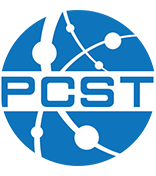Biology in the media – An analysis of a communication magazine in Brazil
Author: Juliana Wallner Werneck Mendes – University of Sao Paulo Brazil
Co-authors:
Alessandra Bizerra – Universidade de Sao Paulo
Science communication is a channel connecting the academic world and the non-specialist public. It is commonly considered a simplified reflection of science production, but it is a unique discourse category that is modified by society’s dynamics. In the past few years, public’s relationship with the information flow went through intense changes, as obtaining information became much faster due to the internet.
Science communication magazines are an important vehicle for disseminating information. But have they been keeping up to these changes? Were there modifications in which topics they choose to publish? Do the public preferences affect their content? To help shed some light on this questions, this work aims to analyze how a communication magazine approached biology issues 20 years ago, and how it does now.
Superinteressante is the science communication magazine with the largest monthly circulation in Brazil. Analyzing the number and subject of articles it published regarding biology, we observed a significant increase in articles about “neurology”, “evolution” and “health”. “Zoology” and “genetics” decreased. In the qualitative discourse analysis performed in four selected articles, we observed a decrease in the text depth regarding biological information.
The analyses show that changes in topics addressed by Superinteressante are not directly related to the volume of scientific production; we need to take into consideration different factors, as society is not a passive element in this relationship. The approach regarding biology topics in Superinteressante changed according to its public’s profile, specially the new relation between society and the information flow. These modifications do not result, however, in a bigger public participation. Superinteressante often detaches its public from the processes of science production, as most of the mass media does. We expect this discussion can contribute to the planning and application of new communication strategies.
The author has not yet submitted a copy of the full paper.
Presentation type: Show, tell and talk
Theme: Science
Area of interest: Investigating science communication practices
